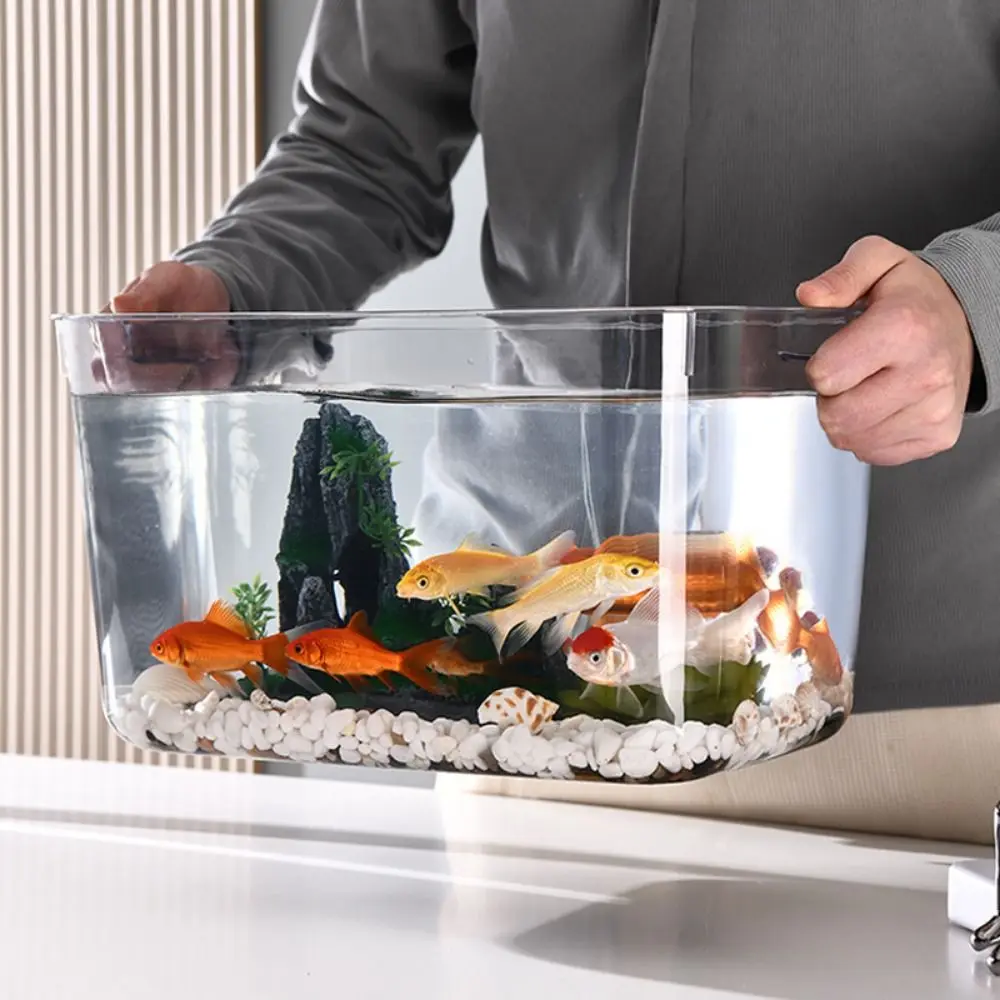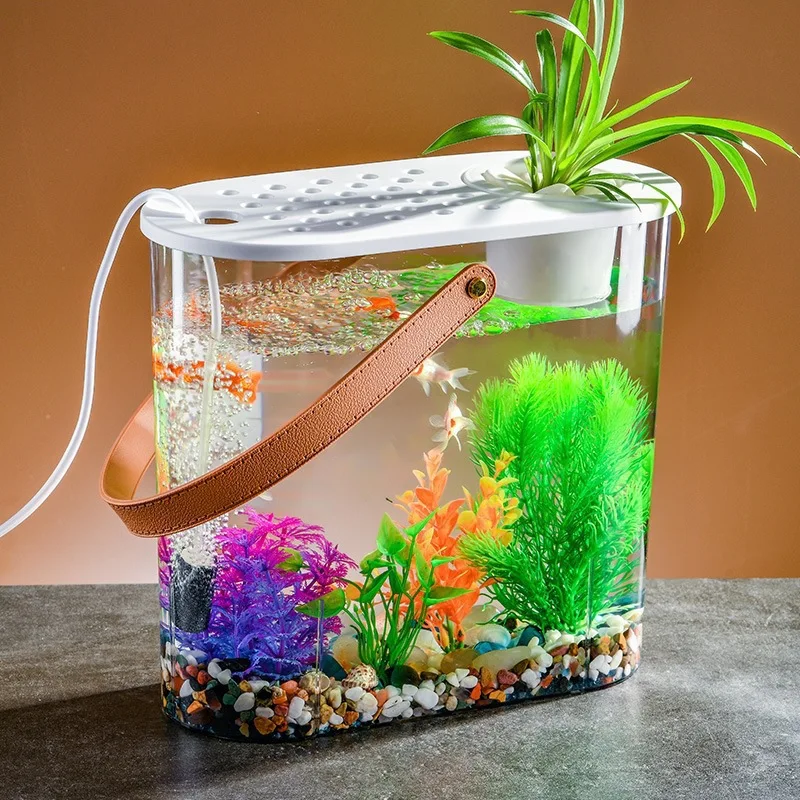Fishkeeping is a captivating hobby that offers both relaxation and an engaging way to observe aquatic life. One common behavior that novice and seasoned aquarists alike may notice is their fish spending considerable time at the top of the tank. While fish gasping at the surface often signals a problem with water quality or oxygen levels, fish swimming or hovering at the surface without gasping can be a perplexing behavior. This article delves into the reasons behind this behavior and provides insightful tips on how to address it.
Key Observations: Identifying the Behavior
Before diving into potential causes and solutions, it’s crucial to precisely identify the behavior in question. Fish naturally explore and frequently swim to various parts of their environment, including the surface. However, if you notice your fish consistently spending more time near the top, without showing signs of distress like gasping for air, it’s an observation worth investigating.
Fish at the surface but not gasping might still be swimming normally or may hover calmly near the surface. Their gills should move at a regular pace, and there shouldn’t be signs of frantic behavior or lack of coordination. This distinction between normal exploration and potentially problematic behavior is subtle but important for determining the underlying cause.
It’s also useful to compare this behavior with the fish’s past habits. Sudden changes in where a fish spends its time can often signal that something in its environment has changed. Documenting these observations can help you identify patterns and potentially link them to specific causes, leading to more targeted and effective interventions.

Common Reasons for Surface Dwelling Behavior
Understanding why your fish may be spending time at the top of the tank while not gasping involves a close look at their environment and overall health. Numerous factors could contribute to this behavior, each warranting consideration.
Water Temperature
Fish are ectothermic creatures, meaning their body temperature is regulated by their environment. If the water temperature is higher at the top of the tank and your fish are seeking warmth, they might hover near the surface more frequently. Conversely, cooler temperatures in the lower levels of the tank might make the surface more appealing if your tank’s heating is uneven.
To address this, ensure that your tank has consistent temperature gradients with good circulation. Investing in a reliable aquarium heater and a thermometer can help maintain optimal conditions. Frequent monitoring will also alert you to any sudden temperature shifts, allowing for quick adjustments before they stress your fish.
Oxygen Levels
While fish gasping at the surface is a telltale sign of low oxygen levels, fish may also inhabit the top layer because it’s the area with the highest concentration of dissolved oxygen. This can occur if the tank is overpopulated, under-filtered, or lacks sufficient aeration. Even without gasping, they could be signaling that deeper layers of the tank are less hospitable.
Improve oxygen levels by ensuring adequate filtration and aeration. Adding air stones or adjusting the outflow of your filter to create more surface agitation can greatly increase oxygen dissolution in the water. Regular water changes and avoiding overstocking are also key practices to maintain a healthy, oxygen-rich environment.
Feeding and Surface Food
Many fish species are surface feeders and may associate the top of the tank with feeding time. If you feed your fish floating pellets or flakes, they might habitually linger near the surface in anticipation of food. This behavior is generally harmless unless it becomes constant or obsessive.
To manage this, ensure a balanced feeding schedule and consider varying the types of food you provide. Sinking pellets or foods that distribute throughout the water column can encourage more natural foraging behavior and prevent them from constantly expecting food at the surface.
Natural Surface Dwellers
It’s also essential to consider the natural habits of your fish species. Some fish are naturally drawn to the surface due to their ecological niches. Labyrinth fish like bettas and gouramis, for instance, have specialized organs allowing them to gulp air from the surface, so they naturally spend more time in the top layers of the tank.
If your fish falls into this category, their surface dwelling is likely a natural and healthy behavior. Ensuring their habitat mimics their natural environment as closely as possible can help facilitate their wellbeing.
Health Considerations: Rule Out Medical Issues
Ensuring that your fish’s behavior isn’t symptomatic of underlying health issues is crucial. If they are at the surface not out of habit but because of stress or illness, prompt action is necessary.
Parasites and Infections
Internal parasites or gill flukes can cause discomfort, prompting fish to seek different parts of the tank. Infections, particularly respiratory ones, might also change their swimming habits even if they’re not gasping for air.
Conduct regular health checks by observing your fish closely for other signs of illness, such as discoloration, unusual spots, frayed fins, or changes in appetite. If you suspect a health issue, consult a vet specializing in aquatic animals and consider quarantining affected fish to prevent the spread of disease.

Stress Factors
Numerous stress factors can impact fish behavior. Incompatible tank mates, excess noise, sudden changes in water parameters, or lack of hiding spaces can all stress fish, causing them to seek refuge near the surface.
Reducing stress involves assessing and modifying the tank environment. Ensure your tank is set up to meet the specific needs of your fish species, offering plenty of hiding spots and keeping water parameters stable. Observation of tank dynamics can also help identify if any specific tank mates are causing stress.
Environmental and Lifestyle Changes
Modifying the environment and lifestyle considerations for your fish can make a significant difference in their behavior and overall wellbeing. Addressing factors such as tank size, decorations, and lighting can help create a more balanced and stimulating environment for your fish.
Tank Size and Capacity
An undersized tank can lead to numerous problems, including poor water quality and increased stress for your fish. Fish need enough space to swim and explore different levels of the tank. An overcrowded or small tank forces them to the surface more often due to limited territory and resources.
Assess your tank’s size and stocking levels, ensuring each fish has adequate room. Upgrade to a larger tank if necessary and follow recommended guidelines for the number of fish suitable for your tank’s size.
Decorations and Plant Life
The layout of your tank can influence where your fish spend most of their time. Lack of sufficient decorations and plant life can cause fish to feel exposed and stressed, leading them to congregate near the surface as they search for perceived security.
Adding a variety of decorations and real or artificial plants can provide hiding spots and territories for your fish, encouraging them to utilize all areas of the tank. This not only alleviates stress but also stimulates more natural behaviors.
Lighting Conditions
Lighting plays a crucial role in fish behavior. Intense lighting might draw some fish to the surface, while others may avoid it. A balanced light cycle, mimicking natural day and night patterns, helps maintain regular activity levels and behavior.
Adjust your tank lighting to ensure it’s neither too bright nor too dim. Timers can automate light cycles to provide a consistent environment, reducing stress and promoting healthy behavior.
Practical Steps for Behavior Adjustment
When your fish exhibit consistent surface dwelling, taking practical steps to adjust their environment is essential. These strategies aim to create a more balanced tank ecosystem, encouraging your fish to explore all levels of their habitat.
Enhancing Water Quality
Good water quality is fundamental to fish health and behavior. Regular water changes, proper filtration, and monitoring water parameters ensure a healthy environment for your fish. Test water for factors like ammonia, nitrites, nitrates, pH, and hardness, addressing any imbalances promptly.
Implement a routine maintenance schedule, including weekly water changes of around 20-30% and cleaning the filtration system without disrupting beneficial bacteria. Consistent water quality minimizes stress and oxygen deficiencies, promoting balanced fish behavior.

Conclusion
Fish at the top of the tank but not gasping can be a normal behavior or a subtle indicator of environmental or health issues. Understanding and addressing this behavior involves careful observation, interpreting various factors, and implementing targeted adjustments to the tank environment.
By paying attention to water quality, tank conditions, dietary routines, and potential health issues, you can ensure your fish thrive and exhibit natural, healthy behaviors. Regularly monitoring and adapting your care practices fosters a balanced and stimulating environment, promoting the wellbeing of your aquatic companions. Through conscientious fish keeping, you can enjoy the beauty and harmony of a healthy aquarium, ensuring your fish lead happy and stress-free lives.










